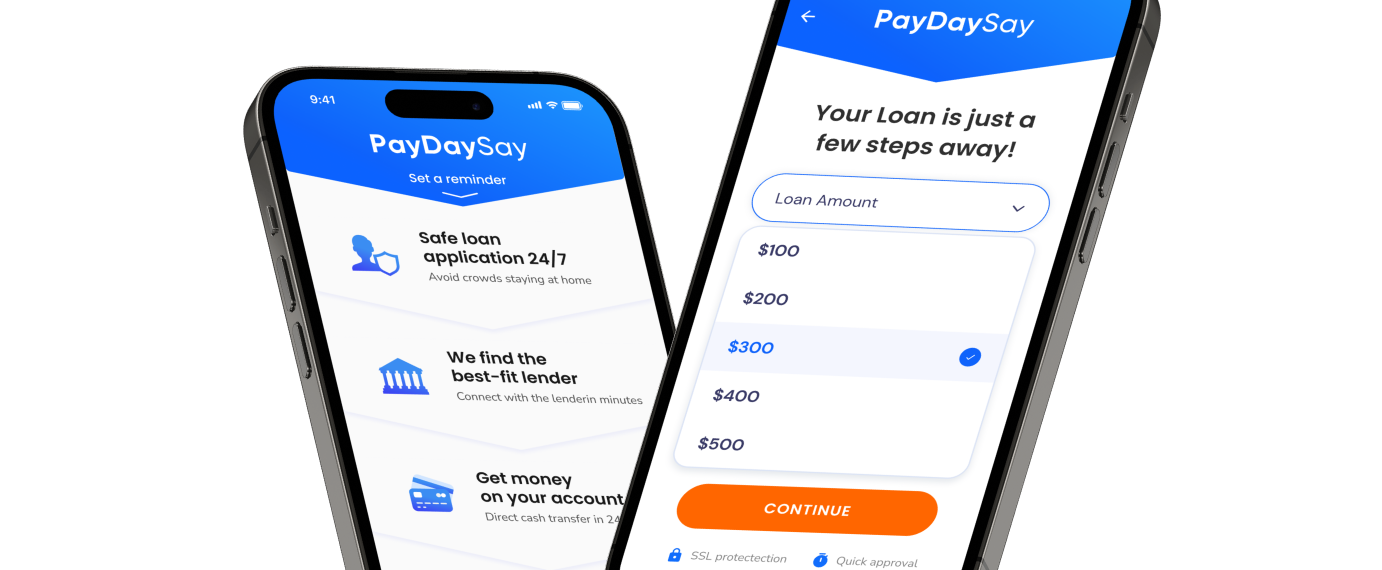Depending on the number of days we have in a year, one can get payment periods as many as 52 and as few as 12. By the Fair Labor Standards Act (FLSA), employers are required to meet each payment period as agreed with the employee. In this article, we cover everything you need to know about pay periods.
When it comes to pay periods, it’s crucial for employers to adhere to the guidelines set by the FLSA. However, financial emergencies can strike at any time, and employees may need access to funds before their next paycheck. This is where cash advance apps and borrowing money come into play.
In this article, we’ll not only discuss the importance of pay periods, but we’ll also delve into the world of cash advance apps and provide tips on how to borrow money responsibly. We’ll equip you with the knowledge you need to navigate the complex financial landscape and make informed decisions that benefit you in the long run.
Pay Period: What Is It?
A payment period is the agreed-upon time employers pay their employees, which could be weekly, bi-weekly, semi-monthly, or monthly. This period typically is the time window between the day after you collect your paycheck and the next payday.
The intervals help the employer track the number of hours the employees work so they can be duly compensated. Aside from that, a payment period establishes a consistent payroll process for the company and predetermined how much of the paychecks goes into taxes and employee benefits.
How Do Pay Periods Work?
Payment periods determine how many paychecks in a year you’re entitled to. The employment contract you get from your employer will state the payment period schedules, which can range from once a week to once a month.
As established, the payroll run counts from the day after your last paycheck to the next payday. An agreed payment period allows salaried employees to sue a company for rights violations if they fail to meet the agreed schedules.
2024 Payroll Calendar (Schedule)
The table below shows the common payroll run for employers using a biweekly pay period schedule in the United States, according to the US Department of Interior for 2024. It’s a leap year, with 29 days in February. Still, the year has 52 weeks and 26 paychecks for a biweekly schedule. More info on payroll in 2024 is provided in the 2024 payroll calendar.
| Month | Start of bi-weekly pay period | End of bi-weekly payment schedule |
| January | 30-12-2023
14-01-2024 |
13-01-2024
27-01-2024 |
| February | 28-01-2024
11-02-2024 |
10-02-2024
24-02-2024 |
| March | 25-02-2024
10-03-2024 |
09-03-2024
23-03-2024 |
| April | 24-03-2024
07-04-2024 |
06-04-2024
20-04-2024 |
| May | 21-04-2024
05-05-2024 |
04-05-2024
18-05-2024 |
| June | 19-05-2024
02-06-2024 16-06-2024 |
01-06-2024
15-06-2024 29-06-2024 |
| July | 30-06-2024
14-07-2024 |
13-07-2024
27-07-2024 |
| August | 28-07-2024
11-08-2024 |
10-08-2024
24-08-2024 |
| September | 25-08-2024
08-09-2024 |
07-09-2024
21-09-2024 |
| October | 22-09-2024
06-10-2024 |
05-10-2024
19-10-2024 |
| November | 20-10-2024
03-11-2024 17-11-12024 |
02-11-2024
16-11-2023 30-11-2024 |
| December | 01-12-2024
15-12-2024 |
14-12-2024
28-12-2024 |
2025 Payroll Schedule
For a paycheck day every two weeks, this is the payroll schedule for the United States for 2025. It details the start and end dates when employees are paid for 26 biweekly pay periods. A complete 2025 payroll calendar sheds light on all the nuances of payroll in the year 2025.
| Month | Start dates for wages paid every two weeks | End dates for 26 pay periods |
| January | 29-12-2024
12-01-2025 |
11-01-2025
25-01-2025 |
| February | 26-01-2025
09-02-2025 |
08-02-2025
22-02-2025 |
| March | 23-02-2025
09-03-2025 |
08-03-2025
22-03-2025 |
| April | 23-03-2025
06-04-2025 |
05-04-2025
19-04-2025 |
| May | 20-04-2025
04-05-2025 18-05-2025 |
03-05-2025
17-05-2025 31-05-2025 |
| June | 01-06-2025
15-06-2025 |
14-06-2025
28-06-2025 |
| July | 29-06-2025
13-07-2025 |
12-07-2025
26-07-2025 |
| August | 27-07-2025
10-08-2025 |
09-08-2025
23-08-2025 |
| September | 24-08-2025
07-09-2025 |
06-09-2025
20-09-2025 |
| October | 21-09-2025
05-10-2025 |
04-10-2025
18-10-2025 |
| November | 19-10-2025
02-11-2025 16-11-2025 |
01-11-2025
15-11-2025 29-11-2025 |
| December | 30-11-2025
14-12-2025 |
13-12-2025
27-12-2025 |
Types Of Pay Periods
There are four types of pay periods that companies use in payroll management. The number of pay periods in 2023, 2024, or 2025 and beyond can be divided into a monthly schedule, a semi-monthly pay schedule, and weekly or biweekly pay schedules. We highlight and detail the paychecks per year for these periods.
Weekly
In this type, you get paid every week, which results in 52 pay periods in a payroll year. This system is usually employed for small-sized businesses that are menial or hard labor-oriented. A weekly payroll in a leap year can extend to a pay frequency of 53.
Biweekly
Compared to the weekly pay period, employees receive 26 to 27 biweekly pay periods if there are more than 52 weeks in a year. It’s a popular payroll service in the US, where workers receive 26 paychecks in a standard year, as wagers are given every two weeks.
Monthly
In this monthly pay period, you can choose to pay your employees on the 1st of the month for work done for the previous month. On the other hand, it could be paid on the last day of the month or a couple of days before that month ends. This is the most commonly used system by companies, as it cuts down on administrative costs as payroll is processed only once a month.
Semi-monthly
The semi-monthly pay period gives you 24 pay periods in a calendar year. It involves getting paid when the month halves, such as the 15th of the month, implying you get paid twice a month. This semi-monthly payroll is advocated by employees as it cuts down on the long wait of paying monthly. Also, businesses can avoid extra paychecks that come with paying weekly or after two weeks.
Years With Extra Pay Periods
In a regular year, the number of pay weeks is 52, but this can extend for years with an extra number of weeks. For instance, 2021 had 53 Fridays, which led to 27 biweekly payments. The number of weeks in a year can vary again like this, and it’s expected to happen in 2027. It’ll be a year with extra payment periods, and companies are encouraged to use payroll software to make their business pay systems easy and convenient.
How To Determine The Best Payroll Schedule For You
Of the four types of payroll schedules listed, employers must consider a few factors to pick which one is best for them. These factors are highlighted in the list below.
- Check the standards of your industry: Consider what periods are used by other companies offering the same services.
- Know what your workers prefer: Confirm the payroll schedule best for your employees.
- Company size: As established, smaller companies use weekly rates, while more prominent companies use semi-monthly to monthly.
- Check the capacity of your administration department: By the time you’re on the third payroll run for the month, if you’re running a weekly schedule, you should know if you have the costs and manpower to maintain the system. Change your company’s pay period according to your administrative size and capacity.
- Know your cash flow: Ensure the system you use doesn’t lead to a cash shortage.
- Adhere to state employment laws: Ensure your company abides by the rules and regulations of the state’s payment frequency.
- Payment method: For instance, if you’d be paying by check, weekly schedules can be daunting.
Comparison Of How Many Pay Periods In A Year Across Industries
Here’s a comparison of different pay periods across industries in the United States.
| Industry | Payment Period |
| Manufacturing | Biweekly or weekly |
| Construction | Biweekly or weekly |
| Technology | Monthly or bimonthly |
| Retail | Biweekly |
| Education | Semi-monthly |
| Healthcare | Weekly |
| Finance | Monthly or bimonthly |
| Government | Monthly |
| Hospitality | Monthly or bimonthly |
| Non-profit | Monthly |
In Conclusion
By establishing payment periods, employers can plan their payroll more accurately and ensure their employee’s labor rights are observed. On the other hand, employees can also ascertain just how much of their paycheck are going to be put into taxes and benefits. It is essential for all workers to understand how payment periods work so they can manage their finances accordingly.
We hope this article has been useful for you in grasping the concept of pay periods and to help better equip you in your own career path. To make sure you stay up-to-date with all legal labor regulations related to payment periods, we recommend consulting or following your country’s labor or Employment Department guidance regularly.
In addition to understanding payment periods, it is important for employees to be aware of payday alternative loan options. These loans provide employees with a low-cost alternative to predatory lenders and payday loans, which can trap borrowers in a cycle of debt. When considering loan options, it is also important to consider the annual percentage rate (APR) of the loan. What is a good apr for a loan – it’s generally considered to be below 36%. This can help ensure that borrowers do not end up paying excessive fees and interest rates over time.
Overall, by understanding payment periods and exploring alternatives to expensive loans, employees can better manage their finances and protect their labor rights. As the job market continues to evolve, staying informed and up-to-date on these topics will be crucial for success in the modern workforce.













 on your homescreen
on your homescreen
